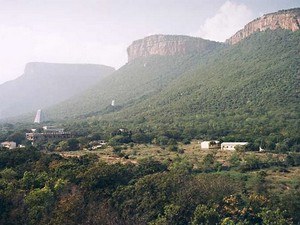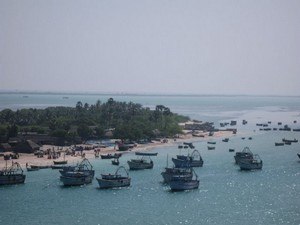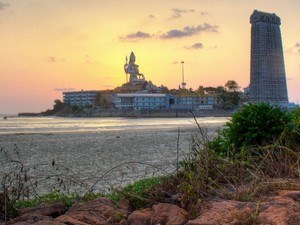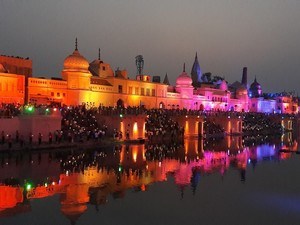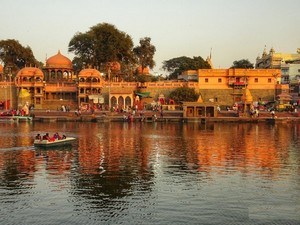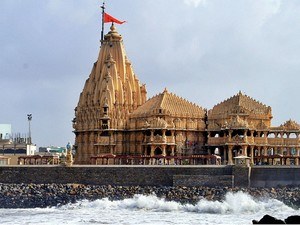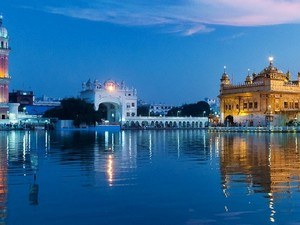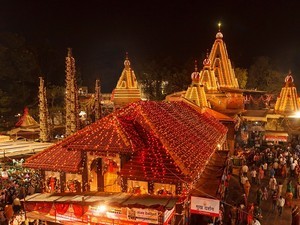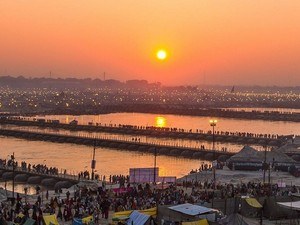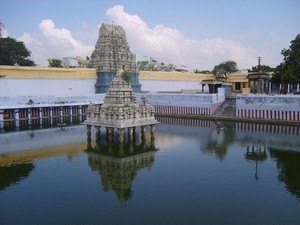1
DAY 1 : RAM KUND - KALARAM MANDIR – SITA GUFA
DAY 1 : RAM KUND - KALARAM MANDIR – SITA GUFA
 Travel from to
Travel from to
 Sightseeing
Sightseeing
Leisure / No Sightseeing
About Ram Kund
At a distance of 2 Km from Nashik Central Bus Station, Ramkund is the most important sacred bathing tank in the Panchavati area of Nashik City. Located on the banks of the Godavari River, this is one of the popular places to visit as part of the
Nashik pilgrimage packages. Ram Kund is a holy site visited by people from all across the world. Devotees believe that a dip in this tank will fulfill their wishes and also free them from their sins.
History & Mythology of Ram Kund
Ram Kund was built by Chitrarao Khatarkar in 1696 AD, and was later restored by Gopikabai, the mother of the fourth Peshwa Madhavrao. According to the legend, this sacred bathing tank on the bank of river Godavari is believed to be the spot where Lord Rama had taken his bath during their exile. It is also said that Lord Rama has performed his father's funeral rites in this Kund and hence Ram Kund is also known .....
 Duration of visit: 30 Mins
Duration of visit: 30 Mins
 Timings: 24 Hours
Timings: 24 Hours
At a distance of 2.5 km from Nashik Central Bus Station, Sri Kalaram Temple is an old Hindu shrine situated in the Panchavati area of Nashik city in Maharashtra. It is probably the most important temple in Nasik, and among the must include places in Nashik tour packages.
Kalaram Temple is dedicated to Lord Rama, who has been enshrined inside the sanctum sanctorum in the form of a black stone idol. It is one of the important places to visit in Nashik. The temple was built by Sardar Rangarao Odhekar in 1790 AD. It was said that Odhekar had a dream that the statue of Rama in black color was in the Godavari River. Odhekar took the statue from the river and built the temple. The temple formed a pivotal role in the Dalit Movement in India. Dr. Ambedkar led a protest outside the temple on 2nd March 1930, to allowing Dalits into the temple.
The architectural .....
 Duration of visit: 30 Mins
Duration of visit: 30 Mins
 Timings: 6 AM - 12 PM & 5 PM - 8 PM
Timings: 6 AM - 12 PM & 5 PM - 8 PM
At a distance of 2.7 km from Nashik Central Bus Station, Sita Gumpha or Sita Gufaa is situated near Kalaram Temple in Panchavati area of Nashik. It is one of the top pilgrimage places to visit in Nashik.
Sita Gumpha is believed to be the place where Sita worshipped Lord Shiva during their exile. The cave, containing the idols of Lord Ram, Sita and Lakshmana, can be accessible only through the help of a narrow staircase. The ancient Shivlinga still exists in the cave and is visited by large number of devotees every day. Devotees believed to be the place where Ravana, the demon king of Lanka, abducted Sita.
Outside the cave is a large grove of 5 very old Banyan trees, after which the area is named, Panchavati means 'a garden of five banyan trees'. These trees are said to have been there during the exile of Lord Rama. There is a place called Tapovan where Lakshmana, the brother of Rama, cut off the nose of Surpanakha, the sister of Ravana. The entire Aranya Kanda of Ramayana is .....
 Duration of visit: 15 Mins
Duration of visit: 15 Mins
 Timings: 6 AM - 9 PM
Timings: 6 AM - 9 PM
At a distance of 8 km from Nashik Central Bus Station, Pandavleni Caves or Trirashmi Caves are the ancient rock cut caves situated on Trirashmi Hills to the south of Nashik. The location of the caves is a holy Buddhist site in Maharashtra and also one of the popular places to visit in Nashik.
Pandavleni Caves are a group of 24 caves carved between the 3rd century BC and the 2nd century AD, representing the Hinayana Buddhism and has nothing to do with the characters of Mahabharata (the Pandavas).These caves were built by the rulers of that time like Satavahanas and Kshaharatas for Hinayana Buddhist monks. More ancient name of caves is Trirashmi Caves where the root 'Trirashmi' means 'triple royal'.
Most of the caves are Viharas except for the 18th cave which is a Chaitya. Caves 3, 10, 18 and 20 are the most significant and fascinating caves among the 24 caves which are noted for their magnificent sculptures. Cave 3 has a large Vihara with fascinating sculptures. Cave 10 is also .....
 Duration of visit: 2 Hours
Duration of visit: 2 Hours
 Timings: 8 AM - 6 PM
Timings: 8 AM - 6 PM
At a distance of 15 km from Nashik Central Bus Station, Sri Dharmachakra Prabhav Tirth is a beautiful Jain Temple situated near Viholi village on Nashik - Mumbai Road. This is one of the top Nashik tourist places and also one of the popular pilgrimage places in Nashik.
Sri Dharmachakra Prabhav Tirth was established under the divine inspiration of Acharya Sri Jag Vallabh Surishwaraji Maharaj Saheb. This recently built temple is popularly called as Jain Mandir. This is a three-storey structure whose architecture is unlike the other Jain temples has completely new and contemporary outlook. The temple is built using the pink sand stones and white marbles which beautifies the feel and the look of the temple.
The three storey temple consists of a Pravachan Hall on ground floor where meditations and sermons take place, Choumukhji on the first floor and Ashtapadji on the third floor. A statue of Sri Mantradhiraj Parshwanath Bhagwan is the main idol (mulnayak) of the temple. The temple .....
 Duration of visit: 30 Mins - 1 Hr
Duration of visit: 30 Mins - 1 Hr
 Timings: 5 AM - 6 PM
Timings: 5 AM - 6 PM
At a distance of 9 km from Nashik Central Bus Station, Muktidham is a marble temple complex located at Deolali Gaon on the suburbs of Nashik. It is one of the popular tourist attractions in the city of Nashik.
Muktidham Temple complex was built by Late Sri JayramBhai Bytco in 1971. An abode of most of the gods and goddesses of the Hindu religion, this splendid shrine displays the replica of all the 12 Jyotirlingas of India. It is believed that a holy darshan of this shrine provides as much virtue as a visit to four holy places, which makes this magnificent shrine a crowded pilgrim center.
It is a magnificent piece of architecture, made with white marble from Makran in Rajasthan. There is a temple dedicated to Lord Krishna in the Muktidham complex. The walls of Krishna temple have paintings depicting scenes from life of Krishna and Mahabharata. These were painted by a noted painter Raghubir Mulgaonkar. Unique to this temple are eighteen chapters of Bhagavad-Gita written on the .....
 Duration of visit: 30 Mins
Duration of visit: 30 Mins
 Timings: 6 AM to 7 PM
Timings: 6 AM to 7 PM
2
DAY 2 : TRIMBAKESHWAR TEMPLE - ANJANERI HILL TRE
%%Itinerary_Title_Day2%%
At a distance of 19 km from Nashik and 3 km from Anjaneri, the Coin Museum, located in the campus of the Indian Institute of Research in Numismatic Studies, is on the Nashik-Trimbakeshwar road.
The museum was founded under the Indian Institute of Research in Numismatic Studies in 1980. This campus spread over an area of 505 acres of land is surrounded by the picturesque Anjaneri hills. The museum is the only one of its kind in Asia with a very rich collection of research and well-documented history of the Indian currency system.
The museum was established to impart a general idea about Indian coins to the common people. The displays in the museums comprise of coins, moulds, dyes, replicas, photographs, numismatic material, along with bronze, terracotta's, copper-hoard objects, paintings and some historical artifacts. These exhibits give a vast idea of the various currency systems that existed in India from centuries. The museum also exhibits dioramas of depicting coin minting .....
 Duration of visit: 30 Mins
Duration of visit: 30 Mins
 Timings: 9.30 AM -1 PM & 2 PM - 5.30 PM except Sundays & on public holidays
Timings: 9.30 AM -1 PM & 2 PM - 5.30 PM except Sundays & on public holidays
About Trimbakeshwar/Tryambakeswar Temple
At a distance of 28 Km from Nashik, Trimbakeshwar or Tryambakeswar is a small pilgrimage town situated along the banks of the Godavari River, at the base of the Brahmagiri Mountains in the Nasik district of Maharashtra. The town is renowned for the Trimbakeshwar Temple, one of the twelve Jyotirlinga temples dedicated to Lord Shiva, which carries significant religious and mythological importance. It is one of the popular places of
pilgrimage sites in Maharashtra, and among the most famous places to visit near Nashik. The sacred Godavari River has its source in the vicinity of Trimbak.
History & Mythology of Trimbakeshwar/Tryambakeswar Temple
Trimbakeshwar Temple was constructed by Sri Nana Saheb Peshwa between 1755 and 1786 AD and is regarded as among the most sacred
pilgrimage sites near Mumbai. This .....
 Duration of visit: 2 Hours
Duration of visit: 2 Hours
 Timings: 5.30 AM - 9 PM
Timings: 5.30 AM - 9 PM
At a distance of 11 km from Trimbakeshwar Temple and 26 km from Nashik, Anjaneri Hill is a spiritual place that lies between Nasik and Trimbakeshwar. Anjaneri is one of the famous forts in the Nashik-Trimbakeshwar mountain range and also one of the popular trekking places in Nashik.
Situated at an altitude of 4264 feet, Anjaneri is the birth place of God Hanuman. Anjaneri fort is named after God Hanuman's mother Anjani. It is said that God Hanuman spent his childhood in these mountains. Being the birthplace of Lord Hanuman, Anjaneri has major significance for devout and hikers alike.
The main attraction of Anjaneri Hill is the Anjaneri Fort which can be reached via Anjaneri village. One should get down at Anjaneri Phata, which is 20 km away from Nasik on the Nasik-Tryambakeshwar road. Anjaneri village is at a walking distance of 10 to 15 minutes from Anjaneri Phata. There are some steps next to the village entrance, through which one can reach the plateau of Anjaneri. From .....
 Duration of visit: 3 Hours
Duration of visit: 3 Hours
 Timings: 6 AM to 6 PM
Timings: 6 AM to 6 PM
End
 Travel from to
Travel from to
 Travel from to
Travel from to
END OF THE TOUR




